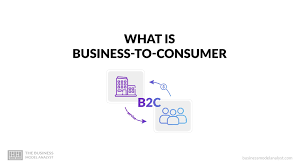The hospitality industry is highly competitive, and in order to succeed, businesses must have a solid marketing plan in place. This plan should include a thorough analysis of the business’s strengths, weaknesses, opportunities, and threats (SWOT analysis), as well as a detailed understanding of the target customer segments. In this article, we will delve into the principles of marketing in the hospitality industry, focusing on SWOT and segment analysis. We will explore the importance of these analyses and how they can be used to develop effective marketing strategies. So, let’s dive in!

1. Introduction: Importance of Marketing in the Hospitality Industry
Marketing plays a crucial role in the success of businesses in the hospitality industry, especially restaurants. A well-formulated marketing plan ensures that the business is on the right path to attract and retain customers, ultimately leading to success. In this regard, Tina Bekele, a young entrepreneur with a dream of opening her own restaurant, serves as a perfect example. Her passion for the restaurant business was ignited when her parents owned a restaurant during her teenage years. After winning a lottery, Tina decided to invest the money in her own restaurant. However, she fears repeating her parents’ mistakes. A comprehensive marketing plan will help Tina avoid these pitfalls and turn her dreams into a reality.
2. SWOT Analysis: Identifying Strengths, Weaknesses, Opportunities, and Threats
The SWOT analysis is a critical component of Tina’s marketing plan. It helps identify the internal strengths and weaknesses of her business, as well as the external opportunities and threats. By conducting a thorough SWOT analysis, Tina can gain valuable insights into her restaurant’s competitive position and make informed decisions about her marketing strategies
2.1 Strengths
Tina’s restaurant possesses several strengths that can give her a competitive edge in the market. These strengths include:
- Reopening Costs: Tina has a substantial amount of money from winning the lottery, which can cover the costs of reopening her restaurant.
- Marketing Skills: Tina has previous experience as a server and manager in the restaurant industry, giving her valuable marketing skills.
- Experience: Tina’s experience in the restaurant industry has provided her with a deep understanding of procurement processes and purchasing goods.
- Technology: Tina recognizes the importance of technology in attracting customers and is knowledgeable about the use of technology in restaurant operations.
- Differentiation in Products: Tina has the ability to create unique dishes that can set her restaurant apart from competitors.
- Décor and Design: Tina understands the importance of creating an appealing atmosphere that can attract customers.
- Financial Base: Tina’s restaurant has a solid financial base from her lottery winnings.
2.2 Weaknesses
Alongside strengths, Tina’s restaurant also has some weaknesses that she needs to address in her marketing plan. These weaknesses include:
- Previous Restaurant Closure: The fact that Tina’s parents’ restaurant closed down may lead to unfavorable comparisons and skepticism from potential customers.
- Lack of Family Support: Tina does not have the support of her family in her restaurant venture, which can be a challenge for her.
2.3 Opportunities
Identifying opportunities in the market is crucial for Tina’s restaurant to thrive. The opportunities she can capitalize on include:
- Demographic: Tina’s restaurant can serve a diverse range of customers, including students, young professionals, young families, and established adults.
- Social: The current food trends, such as regional and exotic ethnic food, gluten-free options, sushi, and sustainable seafood, provide opportunities for Tina’s restaurant to cater to different tastes and preferences.
- Legal: The legal structure in Canada supports the establishment of new businesses, providing Tina’s restaurant with a favorable environment.
- Technological Advancements: The advancements in technology offer opportunities for Tina’s restaurant to explore innovative ways of attracting and serving customers.
- Available Range of Products: Tina’s restaurant can offer a wide range of products to cater to different customer preferences.
2.4 Threats
Tina’s restaurant faces certain threats that she needs to be aware of and address in her marketing plan. These threats include:
- Competitors: The restaurant industry in Canada is highly competitive, with a large number of competitors. Tina’s restaurant needs to differentiate itself to stand out from the competition.
- Rising Costs: The increasing prices of land, labor, skills, and capital in Canada pose a threat to Tina’s restaurant’s profitability.
3. Competitive Analysis: Analyzing Key Competitors
To develop effective marketing strategies, Tina’s restaurant needs to conduct a competitive analysis. This analysis will help identify the key competitors in the market and understand how they position themselves in terms of product, price, place, and promotion. By evaluating the competition, Tina can gain insights into the market landscape and make informed decisions about her own restaurant’s offerings.
3.1 Keg Steakhouse
The Keg Steakhouse is one of Tina’s main competitors. It offers high-quality food, including steak, seafood, lobster, and desserts. The menu is prepared using fresh ingredients, which appeals to customers. The Keg Steakhouse is known for its high standards and premium prices. They target customers with higher incomes, and their location in Masonville Shopping Center attracts a married crowd with an average income of $165,550. Tina’s restaurant can compete with the Keg Steakhouse by offering a similar menu at competitive prices and highlighting the use of locally sourced ingredients.
3.2 Milestones Grill and Bar
Milestones Grill and Bar is another competitor that Tina’s restaurant needs to consider. They offer fresh and delicious food, catering to the middle to higher-income class. Milestones Grill and Bar attract customers with their varied menu options. Their location in Masonville Mall, frequented by married couples with an average annual income of $170,580, poses competition for Tina’s restaurant. To compete with Milestones, Tina’s restaurant can emphasize the quality and affordability of their menu, as well as create a unique dining experience.
3.3 East Side Mario
East Side Mario is known for its variety of Italian foods, including pasta and pizza. They offer customers the opportunity to create their own pasta dishes from a selection of 12 options. East Side Mario has multiple locations in London, making it easily accessible to customers. To compete with East Side Mario, Tina’s restaurant can focus on providing a unique dining experience with a diverse menu, while also leveraging technology and social media to attract customers.
4. Customer Segment Analysis: Identifying Target Markets
Understanding the target customer segments is crucial for Tina’s restaurant to tailor its marketing strategies effectively. By analyzing different customer segments based on demographics, psychographics, benefits sought, and usage rates, Tina can identify the most promising target markets for her restaurant.
4.1 Students
Students from Western University and Fanshawe College form a significant segment that Tina’s restaurant can target. They are typically aged between 17 and 25, with a low level of income. Students often look for affordable dining options and enjoy social outings. Tina’s restaurant can offer student discounts and promotions to attract this segment.
4.2 Young Professionals
Young professionals, aged between 22 and 28, have a higher disposable income compared to students. They often dine out with friends and value experiences. Tina’s restaurant can cater to this segment by offering high-quality food, a vibrant atmosphere, and convenient locations.
4.3 Young Families
Young families, typically aged between 29 and 35, have busy lifestyles and value convenience. They appreciate family-friendly dining options and look for places that offer quick and tasty meals. Tina’s restaurant can cater to this segment by providing a children’s menu and a welcoming environment for families.
4.4 Established Adults
Established adults, ranging from 36 to 49 years old, have higher disposable incomes and enjoy refined dining experiences. They often dine out with family and friends, seeking quality food and service. Tina’s restaurant can appeal to this segment by offering a sophisticated menu, elegant ambiance, and exceptional service.
4.5 Established Adults Late
Established adults in the late stage of their careers, aged between 49 and 59, have the highest income and more free time. They appreciate fine dining experiences and enjoy socializing with friends and family. Tina’s restaurant can target this segment by offering a refined menu, special events, and opportunities for community involvement.
5. Target Market: Multi-Segment Targeting Strategy
To maximize the potential customer base, Tina’s restaurant should adopt a multi-segment targeting strategy. This approach allows the restaurant to appeal to a wide range of customers and expand its business opportunities. Based on the analysis, Tina’s restaurant should primarily target young professionals and established adults. These two segments have the highest disposable income and are more likely to dine out frequently. By offering a diverse menu, appealing ambiance, and exceptional service, Tina’s restaurant can establish a strong presence in the market.
6. Mission Statement and Objectives
Every successful business needs a clear mission statement and objectives to guide its operations and decision-making. Tina’s restaurant should develop a mission statement that reflects its goal of revolutionizing the “farm to fork” trend in London.
7. Product: Creating an Appealing Menu
The menu is a crucial element of any restaurant’s marketing strategy. Tina’s restaurant should focus on offering fresh, healthy dishes made with locally sourced ingredients. By embracing the “farm to fork” concept, Tina’s can differentiate itself from competitors and attract health-conscious customers. The menu should include a variety of options to cater to different tastes and dietary preferences. Here is a sample menu:
| Starters | Main Course | Desserts |
| Nutrella Crepes | Steak Veggies | Tiramisu |
| Cheesy Turkey | Pandoro | Tropical Crepes |
| Italian Sausage | Spaghetti with Meatballs | Bombolone |
| Tomato Bruschetta | Tortellini | |
Tina’s restaurant should also offer a range of alcoholic and non-alcoholic beverages. Fresh produce should be sourced from local farms, such as Greenhill Produce and Truly Green Farms, to emphasize the use of local ingredients. Gluten-free options can also be provided, with gluten-free bread sourced from Maple City Bakery.
8. Pricing: Setting Competitive Prices
Pricing is a critical aspect of marketing in the hospitality industry. Tina’s restaurant should adopt a pricing strategy that aligns with the competition while also highlighting the unique aspects of the menu and dining experience. To attract students, Tina’s restaurant can offer student discounts and group rates. For young professionals and established adults, the restaurant should position itself as a high-quality, affordable option compared to competitors like the Keg Steakhouse and Milestones Grill and Bar. The pricing should be competitive, taking into account the target market’s willingness to pay for quality food and service.
9. Distribution Decisions: Dine-in, Take-out, and Online Orders
Tina’s restaurant should consider multiple distribution methods to cater to different customer preferences. The restaurant can have a dine-in section with three different areas: a regular dining area for walk-in customers, a premium dining hall for customers who make advanced bookings, and a corporate meeting area. Take-out and delivery services can be offered for customers who prefer to enjoy Tina’s restaurant’s food in the comfort of their own homes. Online ordering should also be available through a user-friendly website or mobile app, allowing customers to conveniently place their orders.
10. Marketing Communication Plan: Promoting Tina’s Restaurant
Effective marketing communication is essential to create awareness and attract customers to Tina’s restaurant. The following promotional strategies can be employed
- Advertisement: Utilize print advertising through newspapers, food and drink magazines, as well as brochures, leaflets, handouts, flyers, and point-of-sale advertisements.
- Happy Hours: Offer special discounts during specific hours, such as “Tina’s Tuesdays” from 5pm to 8pm, to attract customers looking for affordable dining options.
- Social Media: Leverage social media platforms like Facebook, Twitter, Instagram, and WhatsApp to promote daily specials, discounts, and engage with customers.
- Discount Coupons: Provide regular customers with discount coupons that can be redeemed on their next visit.
- Miscellaneous: Allocate a budget for miscellaneous marketing activities, such as sponsoring local events or collaborating with influencers.
The total promotional budget for Tina’s restaurant should be $30,000, with a breakdown of expenses for each marketing activity.
11. Conclusion: Turning Dreams into Reality
In conclusion, the principles of marketing in the hospitality industry, particularly SWOT and segment analysis, are crucial for the success of businesses like Tina’s restaurant. By conducting a thorough analysis of strengths, weaknesses, opportunities, and threats, Tina can develop effective marketing strategies. Understanding the target customer segments and tailoring marketing efforts accordingly will help Tina’s restaurant thrive in the competitive market. With a clear mission statement, well-defined objectives, an appealing menu, competitive pricing, and effective marketing communication, Tina can turn her dreams into reality and establish a successful restaurant business.




No comments! Be the first commenter?